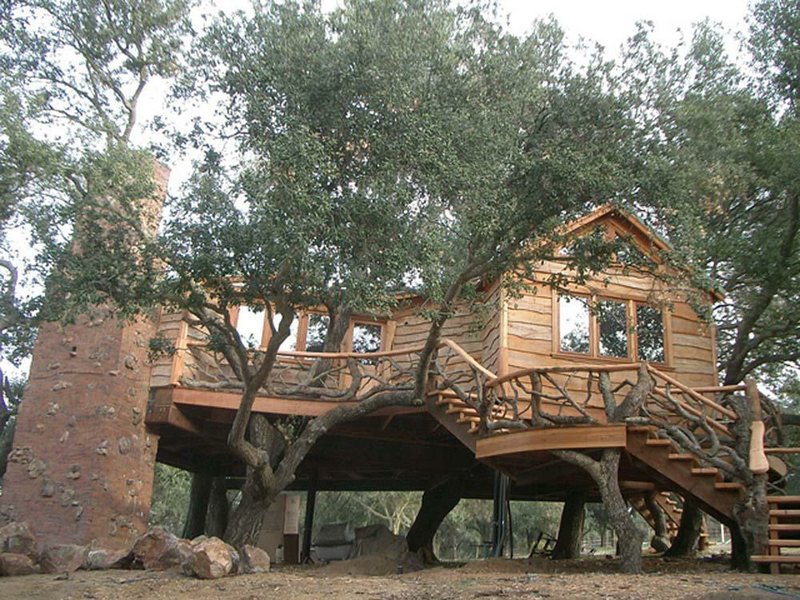LITTLE ROCK — If your image of a treehouse is a “Kids Only” private retreat nailed together from construction scraps, then today’s professionally built treehouses may come as quite a surprise.
These treehouses aren’t just for children, says author and treehouse builder Pete Nelson of Seattle-based TreeHouse Workshop. Nelson has built more than 120 treehouses in 17 years - many of for adults yearning to get closer to nature.
Treehouses range from rustic platforms anchored in sturdy branches to multilevel “tree homes.” A backyard might feature a simple writer’s retreat, and then there are cottages built at tree height, such as those available to rent at Treehouse Cottages in Eureka Springs.
Families are also building larger treehouses to accommodate the kiddos and mom and dad, says Josh Hart of Natural State Treehouses in Fayetteville. They are multifunctional - a place where Mom and Dad can hang out while the kids play in the yard or where all members of the family can play together.
“One of the goals is that a multipurpose structure will bring the whole family out,” Hart says.
“People love the idea of having a private space outside up in the trees.”
Treehouses can be built in any architectural style, any size and any shape, limited only by the size of the tree or trees chosen to support it. They may have zip lines and rock climbing walls for the youngsters, and provide a private space away from TVs, phones and computers for adults.
The experts say the most important step is choosing an appropriate tree or trees in which to build. Consider the following when making that choice.
How healthy are the trees? Healthy trees are critical to building a stable structure. Any sign of disease or weakness automatically disqualifies a tree, Hart says. Nelson even recommends having a trained arborist look at the tree to determine if it is healthy enough to support a treehouse.
Sturdy does it. Most mature, healthy trees will do. Sturdiness is the crucial factor when determining which trees will best support the weight of the treehouse and its users. Look for trees with thick limbs and wide trunks.Oak, beech, maple or fir trees all make excellent foundations.
Whatever way the wind blows. “Trees really do move tremendously,” Nelson says. That’s why most treehouse builders like to spend time with the trees, observing how much branches move in the wind, how much they bend with a thunderstorm. Higher branches tend to move more, as do limbs that are smaller in diameter.
HomeStyle, Pages 39 on 10/29/2011

